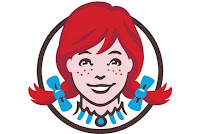Ninth Blog Post: Convergence
Convergence is not a new concept, but it is being is being implemented in a new way. Convergences is a process of two or more things coming together. In relation to media, convergence, can be the merging of different medias as a result of digitization. It can also be media and digitization with computer networking come together from an economic strategy.
Analog forms of media have existed for a much greater amount of time than digital media. These analog medias include books, newspapers and radio. Before digitization of these medias, they were each consumed as separate products. After the internet and computers became more accessible, these media types were being made in digital formats. Digitization allowed each of these medias to be more easily shared and consumed around the world. With the internet, the whole process of information sharing has been going at a faster pace. Information can be shared with the world in a few clicks.
Some convergence has cause controversy in certain situations. For example, after the September 11 attacks, a publisher produced anti-american signs with Bin Laden and Bert, a popular Sesame Street character. The publisher did not know the character, yet people of the area still used these signs in protest. Their aspect of media convergence was skewed based on their perception and what they knew. This incorporates a large part of convergence; we don't know everything. We use outlets, analog and digital media, and our knowledge all in one to make sense of situations and media around us to make sense of things we might not completely understand.
 |
| National Public Radio(NPR) logo |
This type of media convergence allows access to many different types of media using a single device. Audio, text and video content is able to be accessed using internet access. Consumers are more actively accessing this content now that it is easier. This also allows consumers to be able to have a more public, connected discussions about the content being shared. Convergence is a change that is continually happening and it's important to keep up with the pace at which it changes.
By: Mary-Lynn & Robert Hager



Comments
Post a Comment